Spending the night on the hook can be a stressful, restless experience for a lot of boat owners. Every sound you hear becomes more pronounced. Most will at some point will wonder: is the anchor dragging, am I visible enough to other vessels, what’s the weather/tide doing, what am I going to do if I start drifting, and many more unpleasant thoughts. These thoughts running through your head can make what should be a very enjoyable experience quite stressful.
Confidence in your equipment, plus an understanding of what to expect from the weather and tide, will have you resting easy through the night.
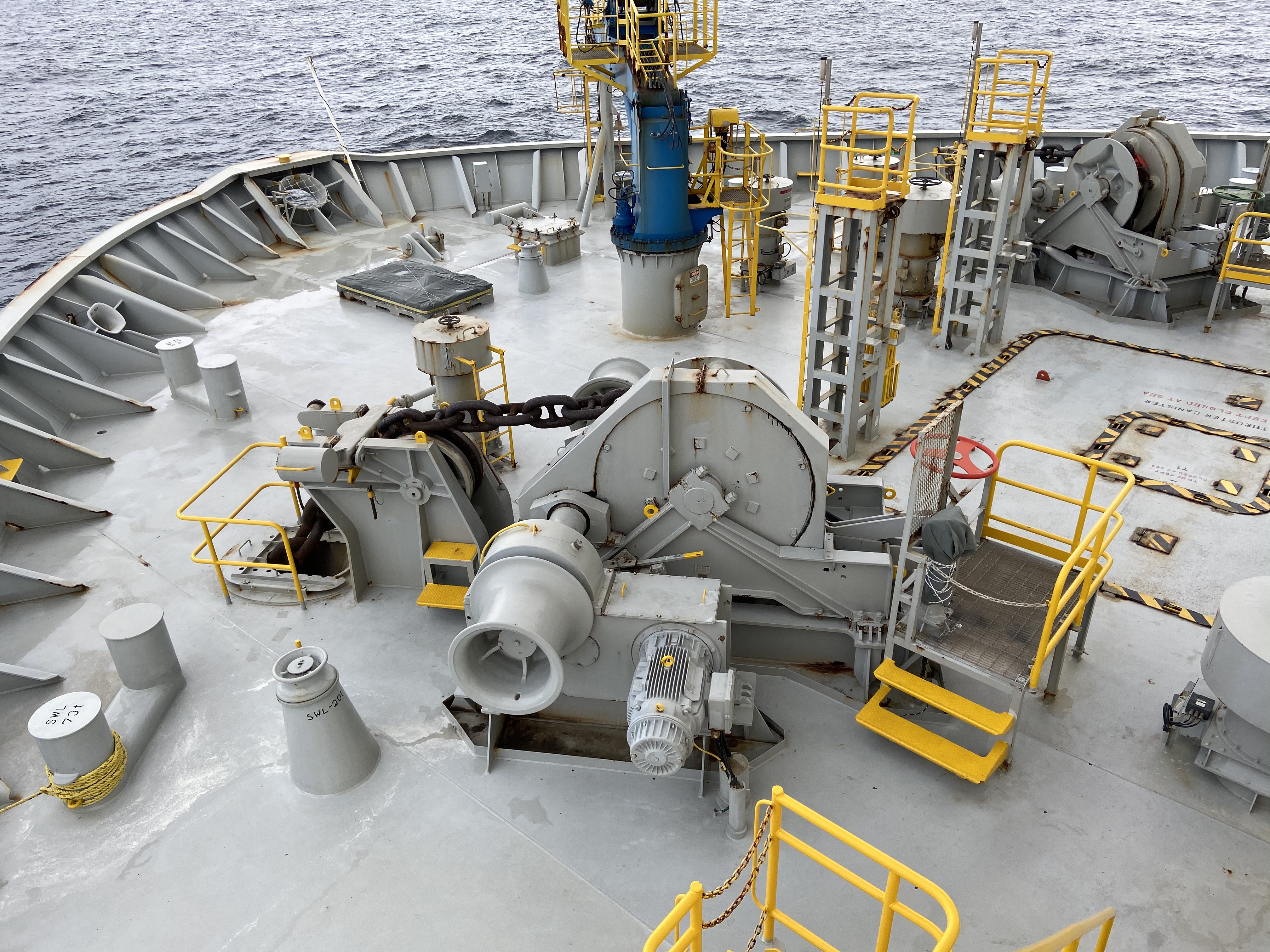
Ground Tackle
All of the equipment used to anchor a vessel is referred to as ground tackle. That includes the anchor, chain, shackles, windlass, etc. The principles of anchoring are the same regardless of the size of vessel. The ground tackle must be appropriately sized for the vessel, and the amount of chain or line out (scope) must be of sufficient length for the water depth and anticipated weather. The general rule of thumb is that scope should be 5-7x water depth in good weather. In bad weather the scope should increase to 10-12x the water depth.
Anchor
The anchor on Encore is a Lewmar 44lb CQR with 20′ of 3/8″ chain. Lewmar, as well as most anchor manufacturers, has a table on its website that recommends the size of anchor needed based on the length of the vessel. There is also a table recommending the chain size to use with its anchors.
The CQR anchor was onboard when Encore was purchased, and this is the first plow anchor that I have used. In the past I have only used Danforth style anchors. Since owning the boat, I’ve spent three nights at anchor, and so far, I am very impressed with the holding power of the CQR. One of those nights was spent rafted up to a 42′ Hatteras Convertible in winds up to 25 knots. The CQR was the only anchor out, and it did not drag at all.
I was skeptical of the CQR anchor at first, but it has performed exceptionally well. Mantus and Rocna also both make two other highly rated plow style anchors.
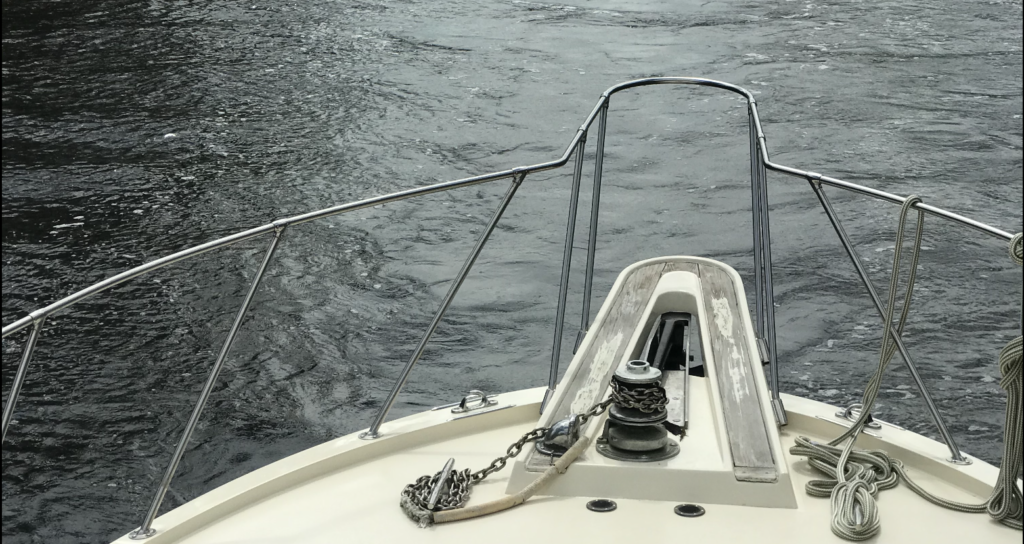
Chain
Just as important as the anchor is the chain you are using with it. The weight of the chain lying on the bottom helps the anchor dig in and keeps the anchor shank on the seafloor. More chain = more weight and increases the chances that the shank will not lift off of the sea floor as the environmental forces push the vessel away from the anchor. When the shank lifts off of the seafloor, the flukes are soon to follow.
Encore has 20′ of 3/8″ chain connected to the anchor with the remainder of the rode (what connects the vessel to the anchor) being 300′ of 5/8″ three strand nylon. Even though more chain is better for holding, the best length to use will usually be specific to the vessel. Weight, which is one of the most beneficial aspects of the chain regarding holding power, can also be problematic. 3/8″ chain weighs 1.4lbs/foot. Using all chain for your rode is heavy, and it may not be reasonable to store several hundred pounds in your anchor locker.
If an all chain rode is not possible, the rule of thumb is to use one foot of chain for every foot of length of the vessel. That option will also be vessel specific. Encore is 43′ but we are only using 20′ of chain. We have a windlass that works very well in recovering nylon line, but not so well with chain. When anchoring in 10′ of water and with 8′ of freeboard at the bow, it is extremely difficult to muscle 44 pounds of anchor plus mud and 25 pounds of chain back to the pulpit. Also, the chain does not easily pass into and out of the spill pipe on Encore. We leave all of the chain neatly stowed on deck when the anchor is not being used.
20′ of chain has worked well on Encore, but is not a standard by any means. Based off of the efficiencies of the ground tackle, size of the vessel, and how often you work out, each owner should choose the longest length of chain that works for their vessel.
Location
When selecting a location to anchor for the first time, the first and most important factor to consider is adequate under keel clearance (UKC) at all heights of the tide. The second most important aspect that you should always consider, unless you are extremely confident in the weather forecast, is protection from the wind and seas. Without adequate under keel clearance you won’t even need an anchor, and without protection from the wind and seas your boat may end up in a position where it doesn’t need an anchor.
Under Keel Clearance
For the majority of US charts, whether they be paper or electronic, the sounding datum shown will be the height of mean lower low water. For areas of the US that have two high tides and two low tides each day, the mean lower low water height will be the average of the lower lows each day over a 19 year period. When selecting a location to anchor, you must ensure that you will remain floating at all heights of the tide.
The above screenshots are both from the Garmin Active Captain app on my iPad. Both screen shots are of Grand Pass in the Mississippi Sound. Grand Pass is one of the many tidal Subordinate Stations of the US. It’s height of tide calculations are based off of the Reference Station of South Pass at the mouth of the Mississippi River. Active Captain will give you the height of tide for Grand Pass, and every other Subordinate Station, at any time of day, any day of the year.
In the above screenshot you can see that on March 7, 2021, high tide occurs at Grand Pass at 6:06 PM with a height above the charted datum of 1.4′. That high was followed by a low of -0.8′ below the charted datum at 5:33 AM on March 8th. If your boat draws 4′ of water, and you anchored near Grand Pass during the evening of March 7th in 6′ of water, when you awoke the next morning your boat would be on the bottom.
Luckily for gulf coast boaters, tidal ranges are not very large, but that is not the case for much of the east coast. Tidal ranges can be several feet. If you do not check the tides and you unknowingly anchor your boat in a location near high tide with minimal UKC, you could be in serious trouble when low tide comes around.
The bottom line is to check the tides for your anchorage location and be certain that you will be floating throughout your stay.
Protection
The second most important factor you need to consider when selecting an anchorage location is adequate protection from the wind and seas. 360° protection is ideal, but is not always possible.
The above two screenshots are also from the Garmin Active Captain app. Each of the green icons with the anchor inside are anchorage locations that other people in the Active Captain Community have used and commented on. If I am going to anchor in a location where I have never been, I can click on the icon and read the reviews of those that have been there before to get some local knowledge. The reviews can be very helpful, with information on uncharted hazards or soundings that may differ from the chart.
Using Cat Island as an example in the screenshots above, anchoring in Smuggler’s Cove at the southeast side of the island would be best with wind directions from NW to NE. Wind blowing from those directions would mean your vessel is anchored on the leeward side of the island. If the wind were to shift to anywhere from the south you would now be on the windward side of the island and feel the full effects of the wind and seas. A wind shift to the south would also mean if your anchor were to drag, you would drift towards the island and possibly aground.
The two above screenshots are both from the Windfiner app. It is a great planning tool that gives reliably accurate weather forecasts. The screenshot on the left is of the Mississippi gulf coast. Each of the small icons shown on the map is selectable and will give its own specific weather forecast. The screenshot on the right shows the predicted weather forecast for Gulfport Outer Range. As you can see, the predicted wind direction is southerly throughout the day on March 25. However, during the early morning hours of March 26, the wind will shift to the NE. Therefore, if you were to anchor on the north side of Cat Island in a southerly breeze during the afternoon of March 25, when you awoke the next morning you would be greeted by a stiff northeasterly wind.
Hopefully your anchor held, but if it didn’t, you would find yourself nearer to the island and possibly aground. A quick check of the weather forecast for the night would have informed you of the upcoming wind shift. It would have alerted you to the potential problems that may arise from anchoring on the north side of the island, and a safer alternative could have been selected.
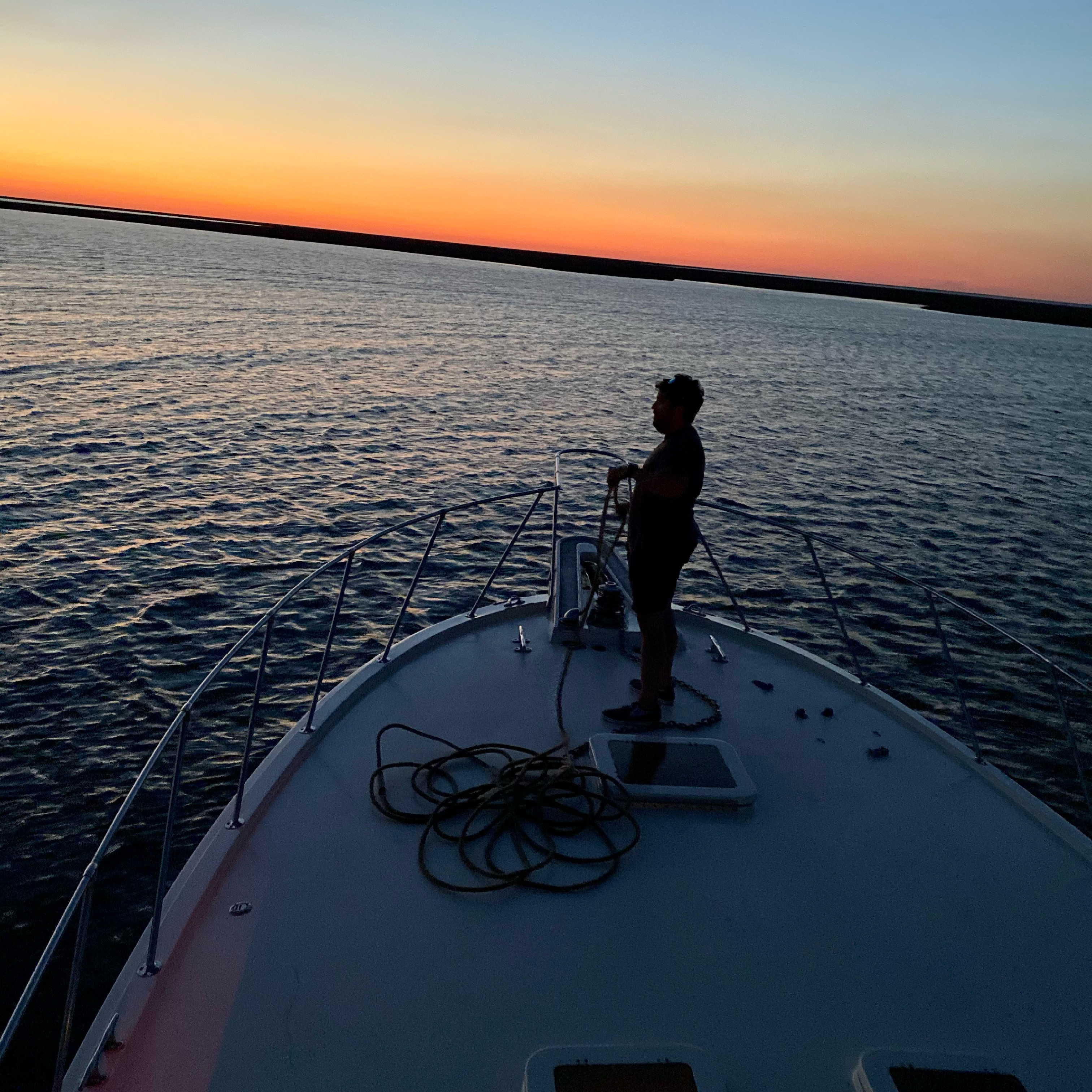
Anchor with Confidence
Spending the night on your boat at anchor is a very unique experience. It should be relaxing and enjoyable. Proper planning is the key to making sure the night goes well. Inspect your ground tackle, and make sure that everything is in good condition. Active Captain and Windfinder are both excellent and easy to use tools to assist you. Use them, or others like them, not only to help you find the best anchorage location, but also to give you an idea of what to expect throughout your stay.
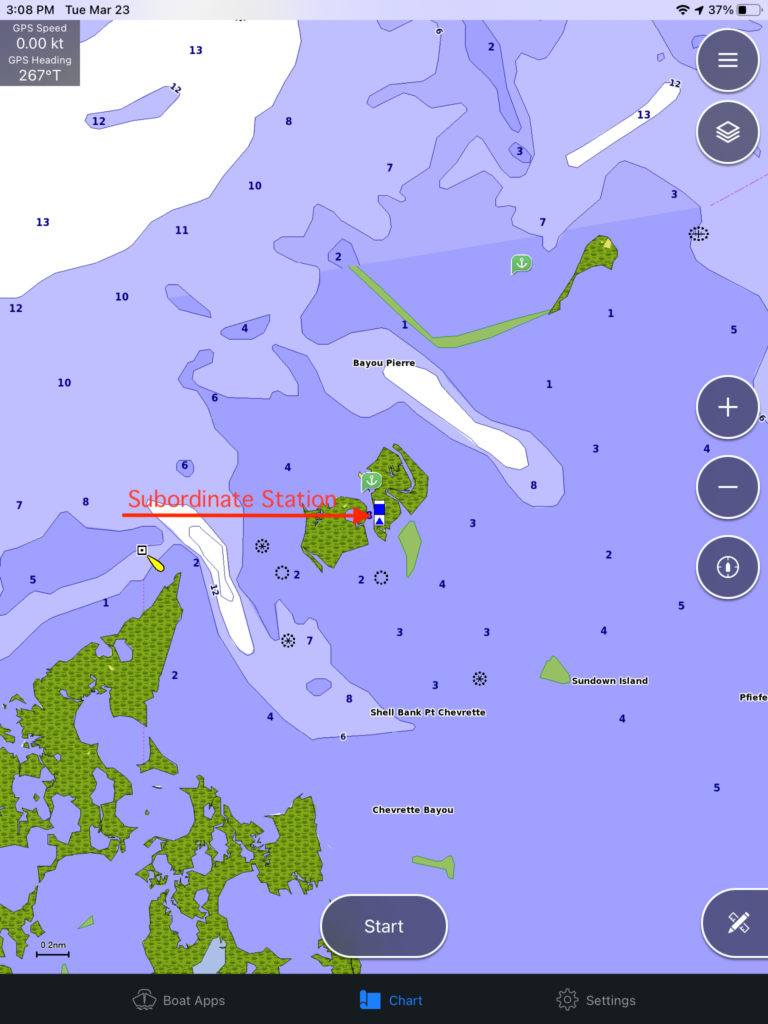
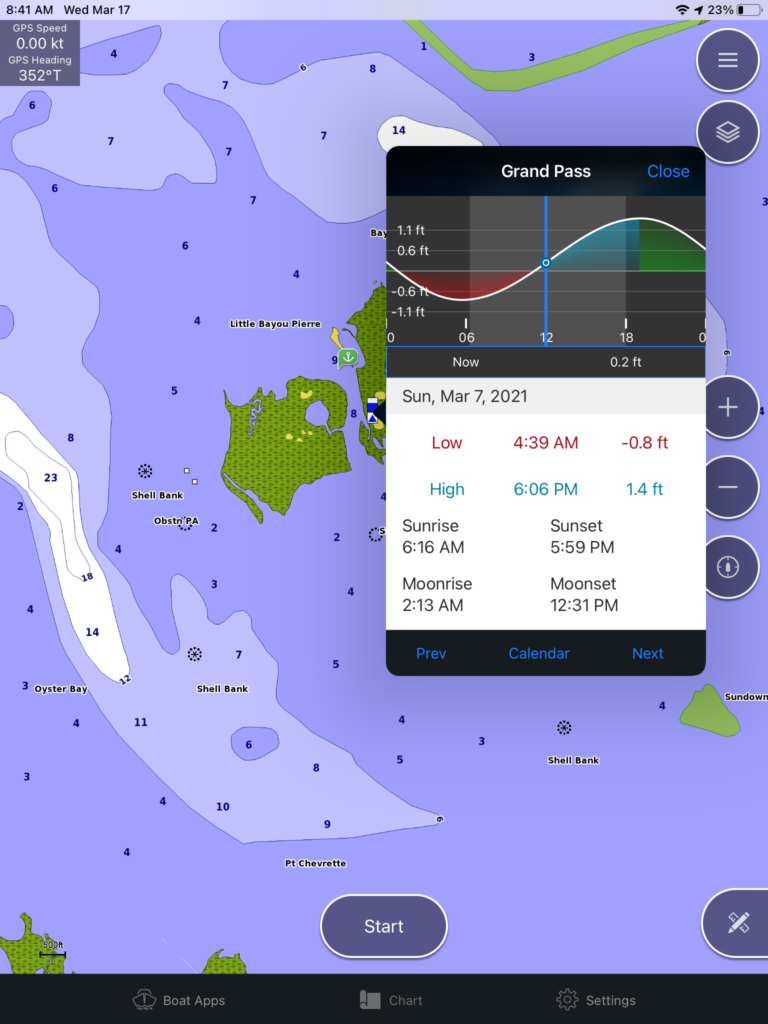

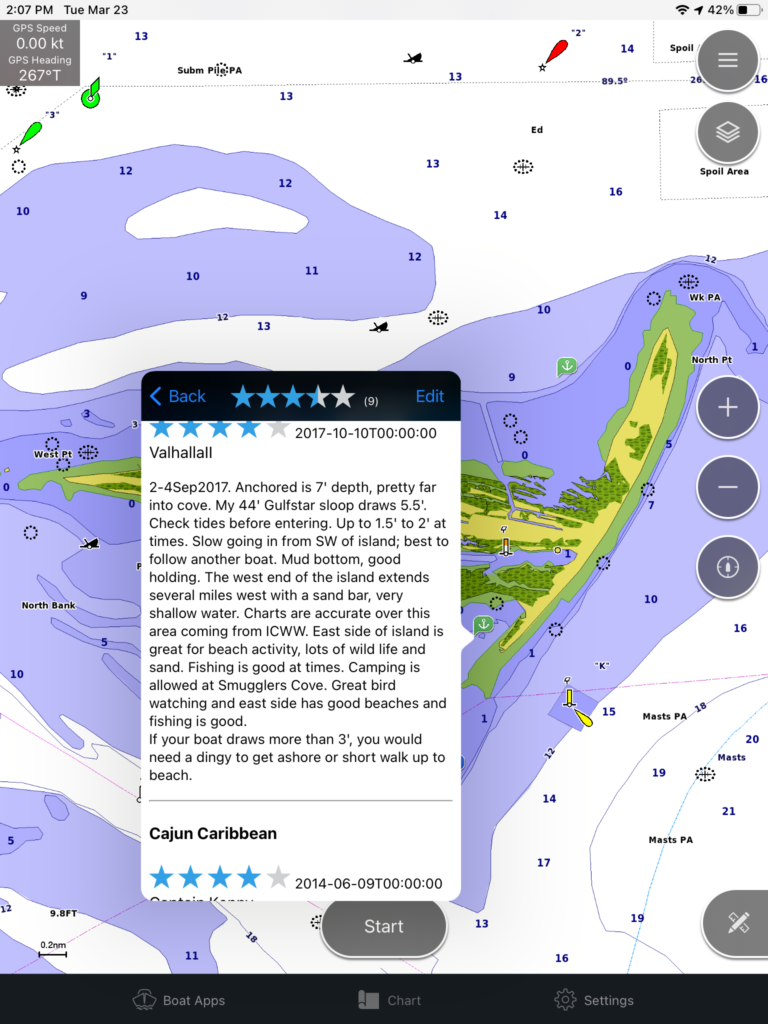
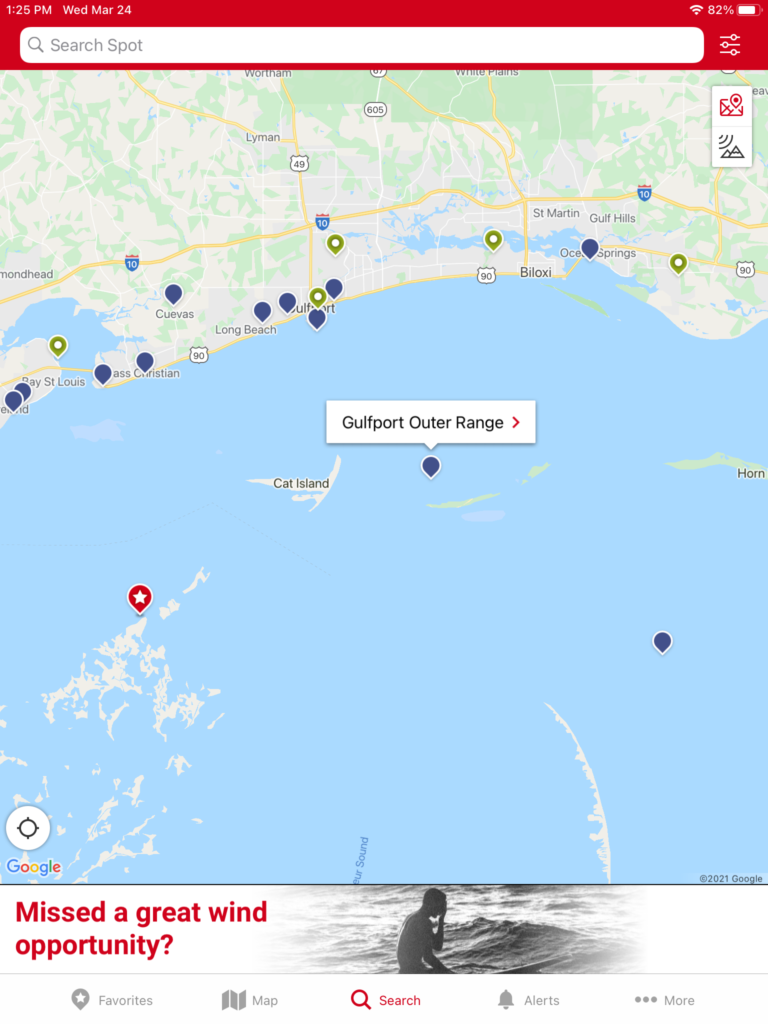
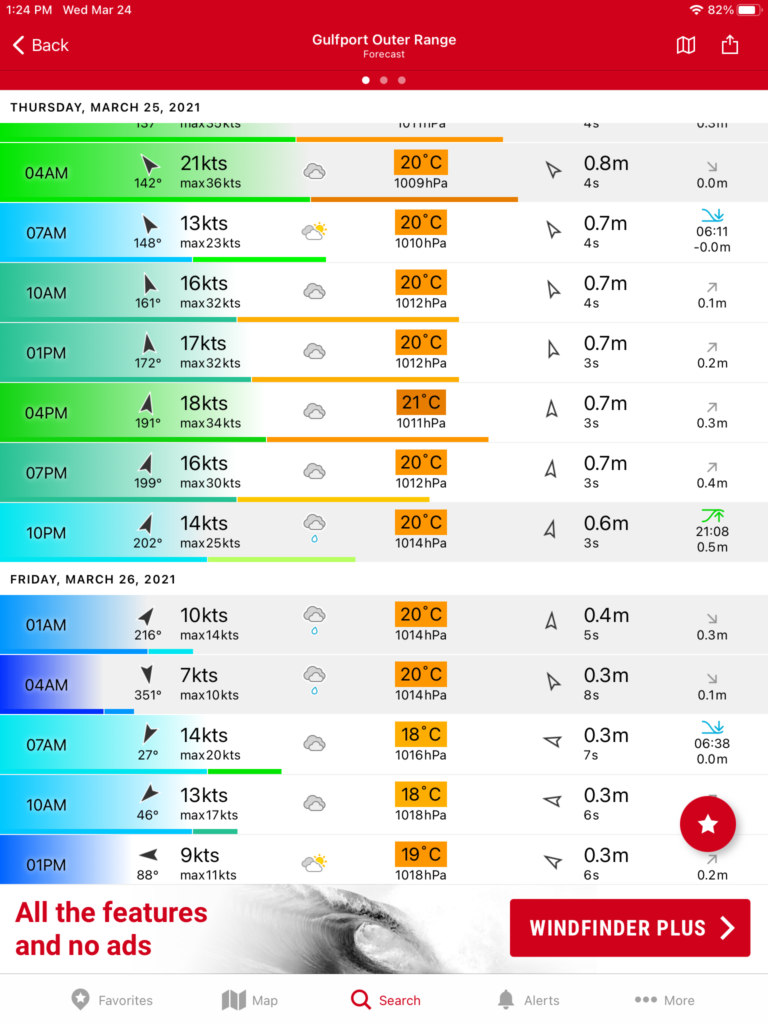
Pingback: Fishing the Chandeleur Islands - September 2021 - The Captain's Manual